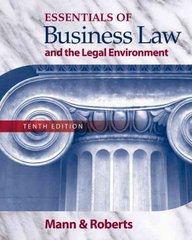Question
1) Suppose Canada imposes high tariffs on Japanese automobiles. The intention is to make autos produced in Japan so expensive for Canadians to buy that
1) Suppose Canada imposes high tariffs on Japanese automobiles. The intention is to make autos produced in Japan so expensive for Canadians to buy that they choose instead to purchase autos
constructed in Canada. Advocates of the policy contend this will create new employment in
Canada. Assuming the Bank of Canada maintains a flexible exchange rate, will this trade policy
prove effective? Explain thoroughly. What if the Bank of Canada maintains a fixed exchange rate, how would be your answer? Explain thoroughly.
2) Some economists believe that the short-run Phillips curve is relatively steep and shifts quickly in
response to changes in the economy. Would these economists be more or less likely to favour
contractionary policy in order to reduce inflation than economists who had the opposite views? What do such beliefs imply about
the benefits of using policy to reduce unemployment?
the costs of using policy to reduce inflation? Explain thoroughly.
3) Use the AD/AS model and the Phillips curve to analyze the short-run and long-run effects of devaluating the home currency under a fixed exchange rate regime.
Step by Step Solution
There are 3 Steps involved in it
Step: 1

Get Instant Access to Expert-Tailored Solutions
See step-by-step solutions with expert insights and AI powered tools for academic success
Step: 2

Step: 3

Ace Your Homework with AI
Get the answers you need in no time with our AI-driven, step-by-step assistance
Get Started


